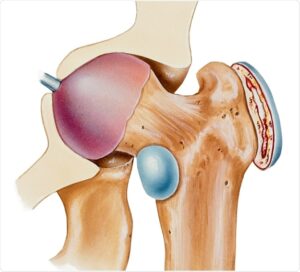
Bursitis
 Bursitis is a painful condition that affects the small fluid-filled pads — called bursae — that act as cushions among your bones and the tendons and muscles near your joints. Bursitis occurs when a bursa becomes inflamed.
Bursitis is a painful condition that affects the small fluid-filled pads — called bursae — that act as cushions among your bones and the tendons and muscles near your joints. Bursitis occurs when a bursa becomes inflamed.
The most common locations for bursitis are in the shoulders, elbows or hips. But you can also have bursitis by your knee, heel and the base of your big toe. Bursitis often occurs in joints that perform frequent repetitive motion.
What Is Bursitis?
Bursitis is inflammation or irritation of a bursa sac. You have these sacs all over your body. They’re filled with fluid that helps ease rubbing and friction between tissues like bone, muscle, tendons, and skin. Bursitis is common around major joints like your shoulder, elbow, hip, or knee.
Bursitis Causes and Risk Factors
Bursitis is common in adults, especially after age 40.
It’s usually caused by repeated pressure on an area or by using a joint too much. High-risk activities include gardening, raking, carpentry, shoveling, painting, scrubbing, tennis, golf, skiing, and throwing. You can also get bursitis by sitting or standing the wrong way for a long time at work or home, or by not stretching enough before you exercise. Sudden injury can sometimes cause bursitis.
As you age, your tendons aren’t able to handle stress as well. They’re less elastic and easier to tear.
If there’s a problem with the structure of a bone or joint (such as legs that are different lengths or arthritis in a joint), that can put more stress on a bursa, causing bursitis. Reactions to medications and stress or inflammation from other conditions, such as rheumatoid arthritis, gout, psoriatic arthritis, or thyroid disorders, may also raise your risk.
An infection, especially with Staphylococcus aureus bacteria, can sometimes cause bursitis.
Bursitis Types
Bursitis might affect:
- Elbow
- Shoulder
- Hip or thigh
- Buttocks
- Knee
- Achilles tendon or heel
Bursitis Symptoms
Pain is the most common symptom of bursitis. It might build up slowly or be sudden and severe, especially if you have calcium deposits in the area. Your joint might also be:
- Stiff
- Swollen
- Red
Call your doctor if you have:
- Fever (over 102)
- Swelling, redness, and warmth in the area
- General illness or more than one area that hurts
- Trouble moving the joi
Bursitis Treatment
Treatment
Bursitis generally gets better on its own. Conservative measures, such as rest, ice and taking a pain reliever, can relieve discomfort. If not relieve discomfort at Alimran Medical Center, we may recommend any of the following treatments
Regenerative medicine treatment (Prolotherapy)
Steroid injection
- Electrical stimulation
- Short and long wave
- Laser therapy
- Ultrasonic therapy
- Magnatic therapy
- Exercises
Chiropractic
Surgery. Sometimes an inflamed bursa must be surgically drained, but only rarely is surgical removal of the affected bursa necessary
